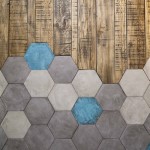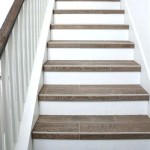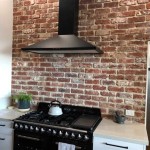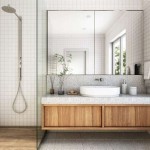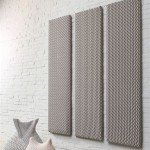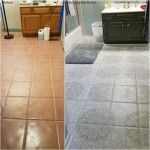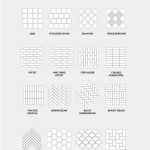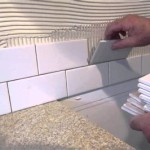Tile Types For Your Home In Minecraft
Minecraft offers a vast palette of blocks that can be used to create diverse and aesthetically pleasing floors. Choosing the right tile types can significantly enhance the overall look and feel of a Minecraft home, adding personality and functionality to different areas. The available options range from naturally occurring blocks to crafted tiles, each possessing unique characteristics that contribute to different design styles.
The selection process involves considering factors such as the desired color scheme, texture, durability, and availability of resources. Understanding the properties of different tile types allows for informed decisions that result in a home that is both visually appealing and practical for the Minecraft environment. Furthermore, thoughtful tile choices can reflect the player's individual preferences and playstyle.
Stone-Based Tiles
Stone-based tiles offer a durable and classic option for flooring in Minecraft. Cobblestone, a readily available block obtained by mining stone, provides a rugged and rustic aesthetic, suitable for basements, pathways, or areas where resistance to wear and tear is important. Smooth stone, created by smelting cobblestone in a furnace, presents a cleaner and more refined look, making it suitable for living rooms, kitchens, or other high-traffic areas within the home.
Stone bricks, crafted from smooth stone, offer a more sophisticated and decorative appearance. These can be further refined into variants like chiseled stone bricks, cracked stone bricks, and mossy stone bricks, each adding unique visual elements to the floor design. Chiseled stone bricks feature intricate patterns, while cracked stone bricks impart a sense of age and history. Mossy stone bricks, found in specific biomes or created by applying bonemeal to stone bricks near water, introduce a touch of nature into the interior. These stone brick variations can be combined to create complex and visually interesting floor patterns.
Andesite, diorite, and granite are also stone-based options. These blocks are naturally occurring and provide different shades and textures compared to regular stone. Andesite is a light gray, diorite is a mix of white and black, and granite is pinkish. Polished versions of these blocks, created by placing four of each block in a square in the crafting table, offer a smoother and more refined appearance. They are suitable for accent areas or to create contrast with other flooring materials.
Deepslate, a darker and denser variant of stone found deeper underground, offers a more modern and industrial aesthetic. Deepslate tiles can be crafted from deepslate blocks and offer a similar appearance to stone brick but with a darker tone. Polished deepslate and deepslate brick offer further variations, providing a range of options for creating sophisticated and durable flooring.
Wood-Based Tiles
Wood planks offer a warm and versatile flooring option in Minecraft. Obtained from various tree types, each wood provides a unique color and texture. Oak planks are a common choice due to their accessibility and neutral tone, while spruce planks offer a darker and more rustic look. Birch planks provide a lighter and brighter aesthetic, and jungle planks introduce a warmer, reddish hue. Acacia planks provide a unique orangey-brown color, and dark oak planks offer a very dark and rich tone.
The different wood types can be combined to create intricate floor patterns, adding visual interest and defining different areas within the house. For example, a border of dark oak planks can frame a floor of birch planks, creating a contrasting and visually appealing effect. Different wood planks also offer different levels of resistance to fire, although the specific duration of burning is usually negligible in most gameplay situations.
Wood can be further processed into various forms to create different tile effects. Wood slabs, created by sawing a wood block in half, offer a thinner flooring option, useful for saving resources or creating subtle height differences in the floor. Wood stairs can also be used to create interesting floor textures and patterns by arranging them in different configurations, offering a more three-dimensional feel.
Stripped logs, obtained by using an axe on a log block to remove the bark, can provide a unique and rustic floor texture. The exposed wood grain adds character and warmth to the interior. Using stripped logs requires considering the orientation of the grain, as the texture will be directional. They are particularly suitable for cabins, lodges, or other rustic-themed builds.
Crafted Tiles and Decorative Blocks
Beyond the natural stone and wood blocks, Minecraft offers a range of crafted tiles and decorative blocks suitable for flooring. Terracotta, created by smelting clay in a furnace, offers a variety of colors and patterns when combined with dyes. Glazed terracotta, crafted by smelting dyed terracotta in a furnace, provides even more intricate patterns and vibrant colors, making it a popular option for creating decorative and eye-catching floors.
Concrete, crafted from sand, gravel, and dye, offers a smooth and modern flooring option. Concrete powder, which solidifies into concrete upon contact with water, allows for easy placement and customization. The wide range of available dyes allows for creating floors in virtually any color, making concrete a versatile choice for modern and contemporary builds.
Wool blocks, obtained from sheep, offer a soft and colorful flooring option, although they are flammable. Wool can be dyed in a variety of colors, allowing for creating vibrant and patterned floors. However, due to their flammability, wool blocks are generally not recommended for areas where fire is a concern, such as near fireplaces or cooking areas.
Nether bricks, crafted from netherrack in a furnace, offer a dark and imposing flooring option. Nether bricks, red nether bricks, and blackstone tiles are all options for nether-themed builds, often used for detailing or adding a touch of the underworld to structures. These tiles are particularly durable and can create a dramatic and atmospheric effect.
Prismarine blocks, obtained from ocean monuments, offer a unique and aquatic aesthetic. Prismarine, prismarine bricks, and dark prismarine provide different shades of blue and green, creating a cool and calming atmosphere. Sea lanterns, also found in ocean monuments, emit light and can be incorporated into the floor design to provide illumination.
Specialty and Functional Tiles
Beyond purely aesthetic choices, some tile types in Minecraft offer additional functionality. Slime blocks, crafted from slimeballs, offer a bouncy surface, allowing for creative movement and gameplay mechanics within the home. Note blocks, crafted from wood and redstone, can be used to create musical floors, triggering different sounds when stepped on or activated.
Redstone blocks and redstone lamps can be incorporated into the floor design to create interactive or illuminated surfaces. Pressure plates, crafted from stone or wood, can be used to activate redstone circuits when stepped on, triggering doors, lights, or other mechanisms. Tripwire hooks and string can also be used to create hidden traps or sensors in the floor.
Ice blocks, obtained from frozen biomes, offer a slippery surface, allowing for faster movement. Packed ice and blue ice, which are denser forms of ice, provide even faster movement speeds. These blocks can be used to create ice rinks or speed-boosting pathways within the home.
Glowstone, obtained from the Nether, and sea lanterns, found in ocean monuments, provide natural light sources that can be integrated into the floor design. These blocks emit light without requiring any external power source, making them a convenient and aesthetically pleasing alternative to torches or lanterns.
End stone bricks, found in end cities, offer a unique and otherworldly aesthetic. They provide a pale yellow color and a distinctive texture, making them a suitable choice for builds inspired by the End dimension. End stone bricks are also highly durable and resistant to explosions.
Honeycomb blocks, crafted from honeycomb, provide a sticky surface that can slow down movement. This can be used to create challenging obstacle courses or security systems within the home. The unique texture of honeycomb blocks also adds visual interest to the floor design.
Calcite, a bright white block found in amethyst geodes, offers a clean and modern flooring option. Its smooth texture and bright color create a sense of spaciousness and light. Calcite is particularly suitable for minimalist or contemporary builds.
Tuff, a dark gray block found underground, provides a subtle and understated floor texture. It is a relatively common block, making it a readily available option for larger flooring projects. Tuff blends well with other stone-based blocks and can be used to create a natural and rugged aesthetic.

Minecraft Modern House 44 Interior Tutorial How To Build Material List In Description

Your Quick Cheat Sheet On How To Build Minecraft Roofs Codakid

Minecraft Modern House 50 Interior Tutorial How To Build Material List In Description

Minecraft Survival House 3 Interior Tutorial How To Build Material List In Description

Small Minecraft House Ideas Plans For Your Next Home The Architects Diary

Minecraft Medieval Style House Tutorial

Minecraft Floor Designs Tile Patterns In Various Colors

Easy Small House Builds In Minecraft Perfect For Beginners Iredell Free News

Minecraft How To Build A Split Level House Part 1
Best Cute Minecraft Houses 45 Cozy Creations For Max Uwu
Related Posts

